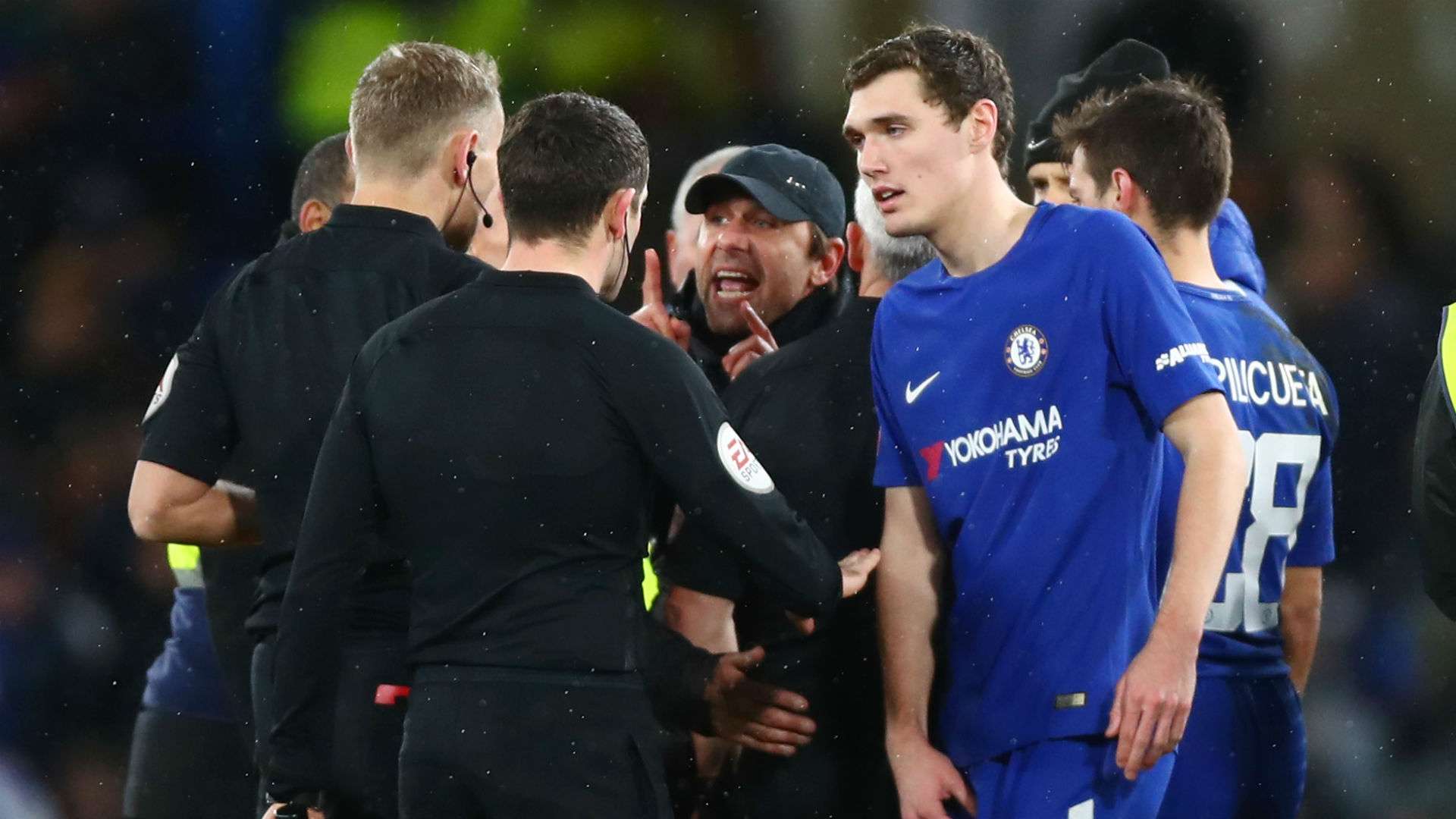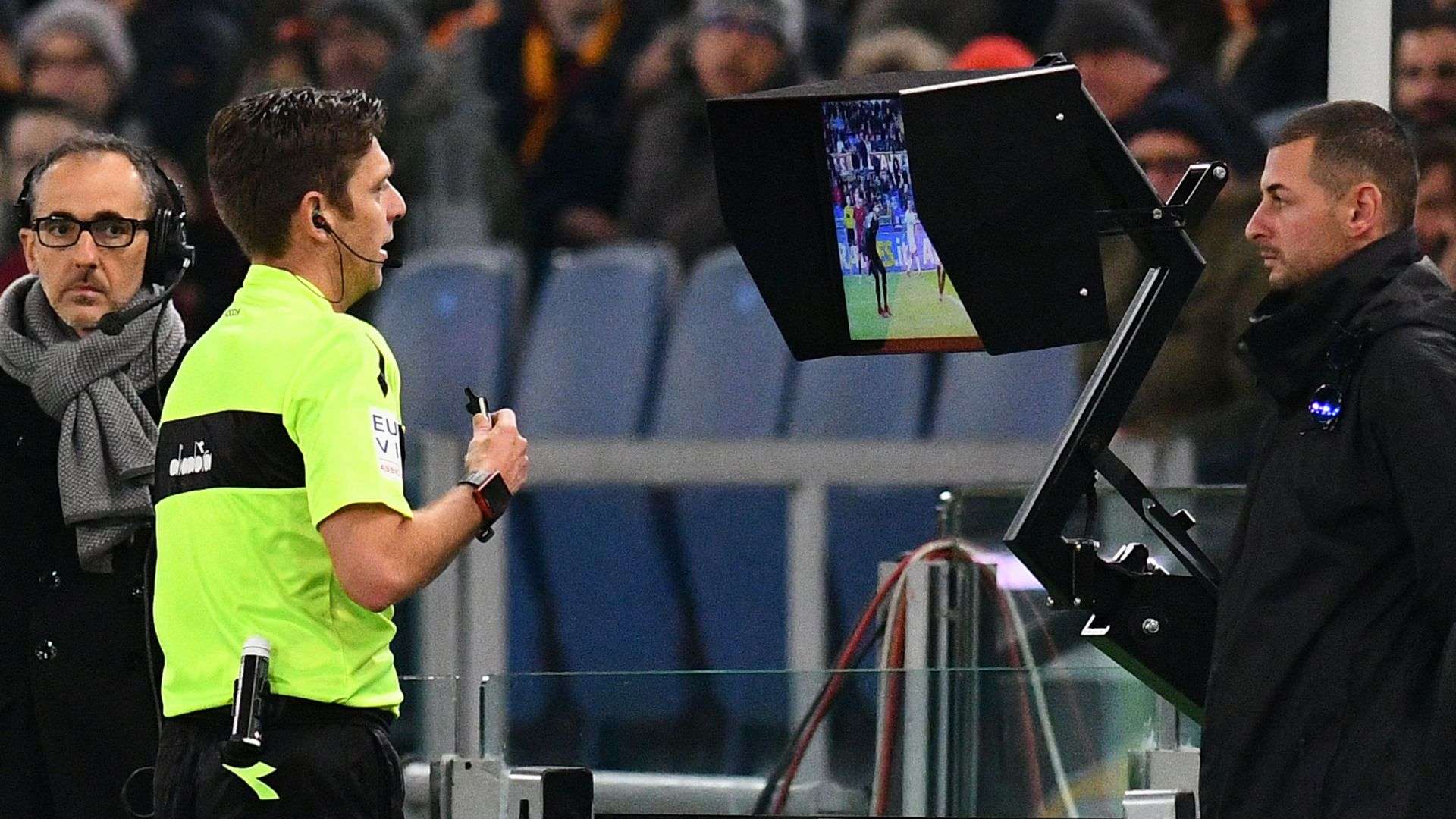Video technology was used at the 2018 World Cup in Russia to mixed success, and is also being beta-tested in several major tournaments around the globe.
The introduction of video assistant refereeing (VAR) was designed to help referees and eliminate errors, ensuring less mistakes would be made that would lead to tumultuous results in games.
Following its usage in the World Cup, its reception has been a mixed bag as slew of other problems arise from VAR use – such as consistency and the game disruption.
Whereas countries such as Australia, the United States and Italy have already been implementing its usage, England has not yet introduced VAR to its top-flight league, though it has been used in the FA Cup.
With the trial period now under way, Goal takes a look at VAR in England, when it will be used in the Premier League and, of course, the controversies.
What is VAR?
VAR is the acronym for video assistant referee and it is new initiative being rolled out in a number of football competitions across the world.
The VAR system is only used in four game-changing scenarios: goals (and incidents leading to them), penalties, red cards and cases of mistaken identity.
Decisions can be overturned, but only in the case of a "clear error". The referee can request a video review of an incident themselves, or the VAR can notify the referee of an error.
Referees can signal that an incident is being checked and then they have the option of simply accepting VAR advice or reviewing footage themselves before coming to a conclusion.
FIFA has produced a basic explainer video on VAR, which can be watched above.
You can read our in-depth explainer here!
When will the Premier League use VAR?
 Getty
Getty
VAR is not currently being used in the Premier League after clubs voted against its inclusion for the 2018-19 season, but it will soon be introduced.
The Premier League confirmed in November 2018 that its clubs have agreed in principle for the technology to be used from the 2019-20 season onward. A formal request will now be made to the International Football Association Board (IFAB) to ratify the agreement.
A statement released by the league explained: "Clubs were provided with an update on the non-live VAR trials being undertaken by the League and Professional Game Match Officials (PGMOL) this season.
"Key learnings from VAR's use in the FA Cup and Carabao Cup, and other leagues across the world, were discussed in detail.
"The Premier League’s non-live testing programme will remain in place for the rest of this season, with a continued emphasis on those Saturday afternoons which have several matches being played concurrently, and developing a clear protocol for communicating VAR decisions to fans."
While it is not yet in use in the Premier League, VAR is currently being used in a number of English competitions on a trial basis. Other top level competitions in the country have fully incorporated VAR into the officiating of games, with some matches in the EFL Cup and the FA Cup acting as a litmus test.
The FA Cup third round encounter between Brighton and Crystal Palace on January 8, 2018 was the first time VAR was used in English club football. It has been used in a number of games since, but not without controversy.
Plenty of high profile figures in the game have called for VAR's introduction to the Premier League to be expedited, with the angry outburst of Southampton striker Charlie Austin directly preceding the announcement of the November 2018 agreement.
VAR controversy in English football

The live trial period of VAR in England is in its second season and there have been a number of controversial and divisive incidents.
Former Chelsea manager Antonio Conte was left feeling furious following the referee's decision not to use the VAR in his side's 2017-18 FA Cup third-round replay against Norwich City.
Blues forward Willian appeared to be fouled inside the box, but his appeals fell on deaf ears and he was shown a yellow card for diving instead. "I think that we need to improve if we want to use this new system," Conte told reporters after the game.
In the same round of that season's FA Cup, Kelechi Iheanacho became the first man to score a VAR-assisted goal in England when his originally disallowed strike against Fleetwood Town was awarded following consultation.
 Getty
Getty
Later that season Liverpool found themselves sucked into the vortex of confusion when VAR altered the complexion of their FA Cup fourth-round tie against West Brom on January 27.
In an English football first, VAR was used to disallow a West Brom goal scored by Craig Dawson, which would have seen them go 3-1 up, and two minutes later it was then used to award a penalty to Liverpool, which Roberto Firmino subsequently missed.
Then Baggies manager Alan Pardew was critical of the process, which he claimed was badly communicated, and referred to a sense of mystery around the whole thing.
There was further uproar in another Liverpool match against Tottenham in the Premier League - where, remember, VAR is not yet in operation - after referee Jon Moss requested assistance from the TV.
The fourth official for the game, Martin Atkinson, did not respond to the request though and Moss' actions were described as "misguided".
Mid-way through February last term there was further controversy as referee Kevin Friend ruled out a Juan Mata goal in Manchester United's FA Cup fifth-round win over Huddersfield Town after consulting with the VAR.
Confusion arose when an image emerged showing what appeared to be defining lines that were not straight. However, it was later confirmed that this was simply the wrong image and that the VAR saw the correct image before making a decision.
